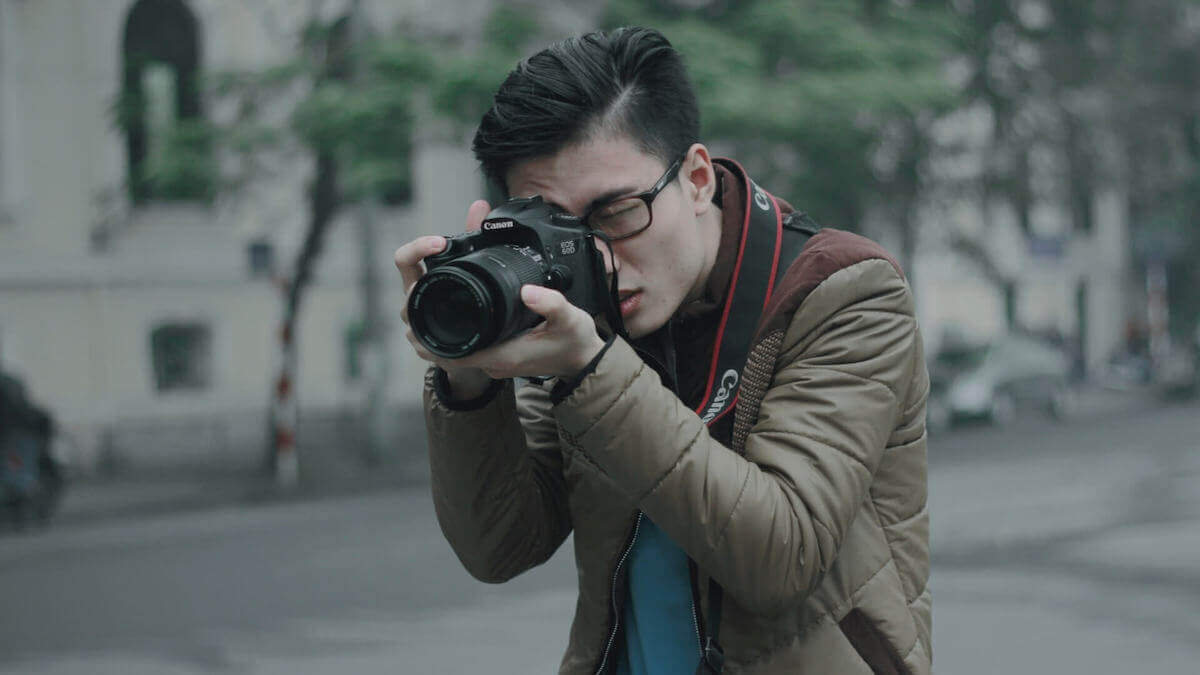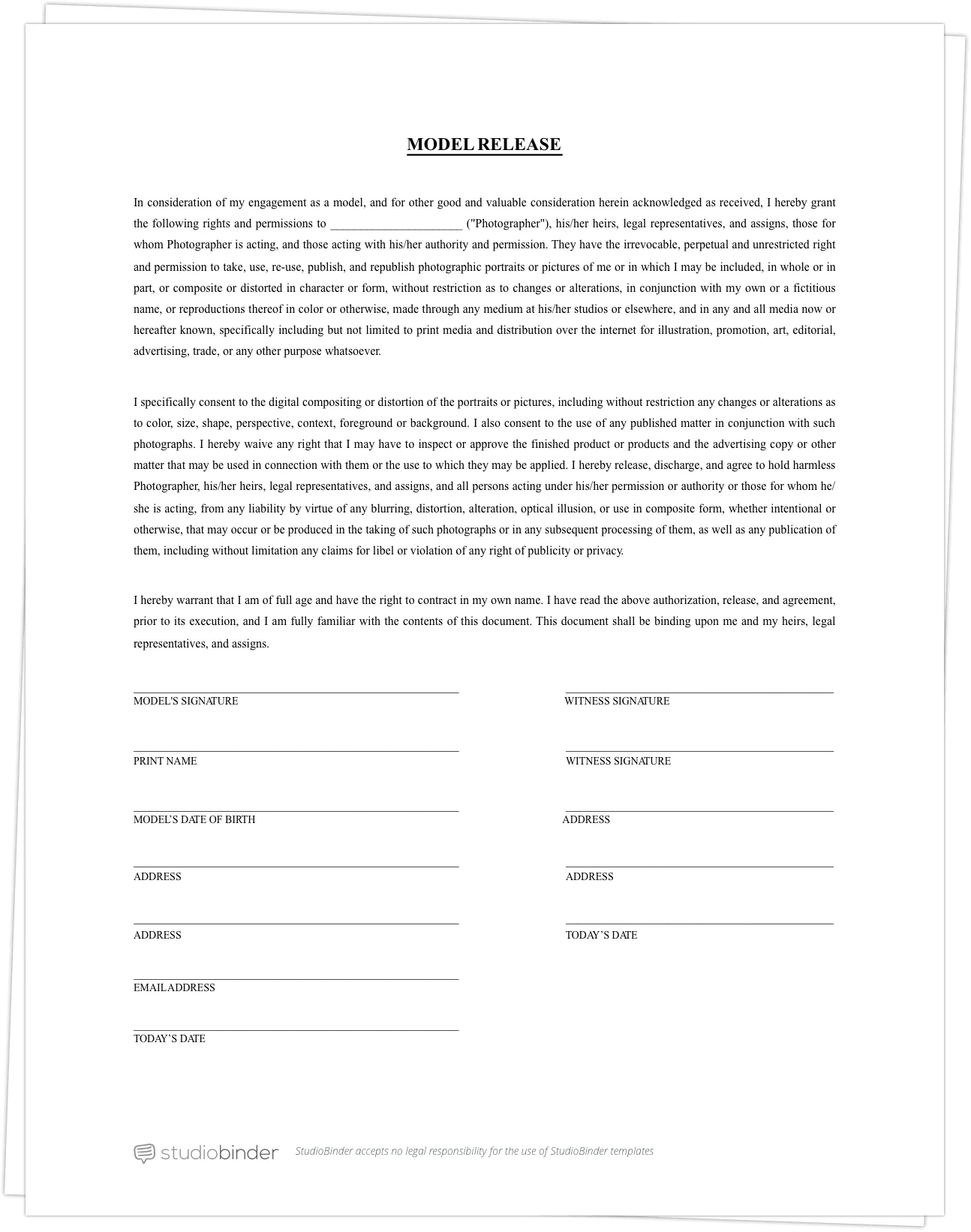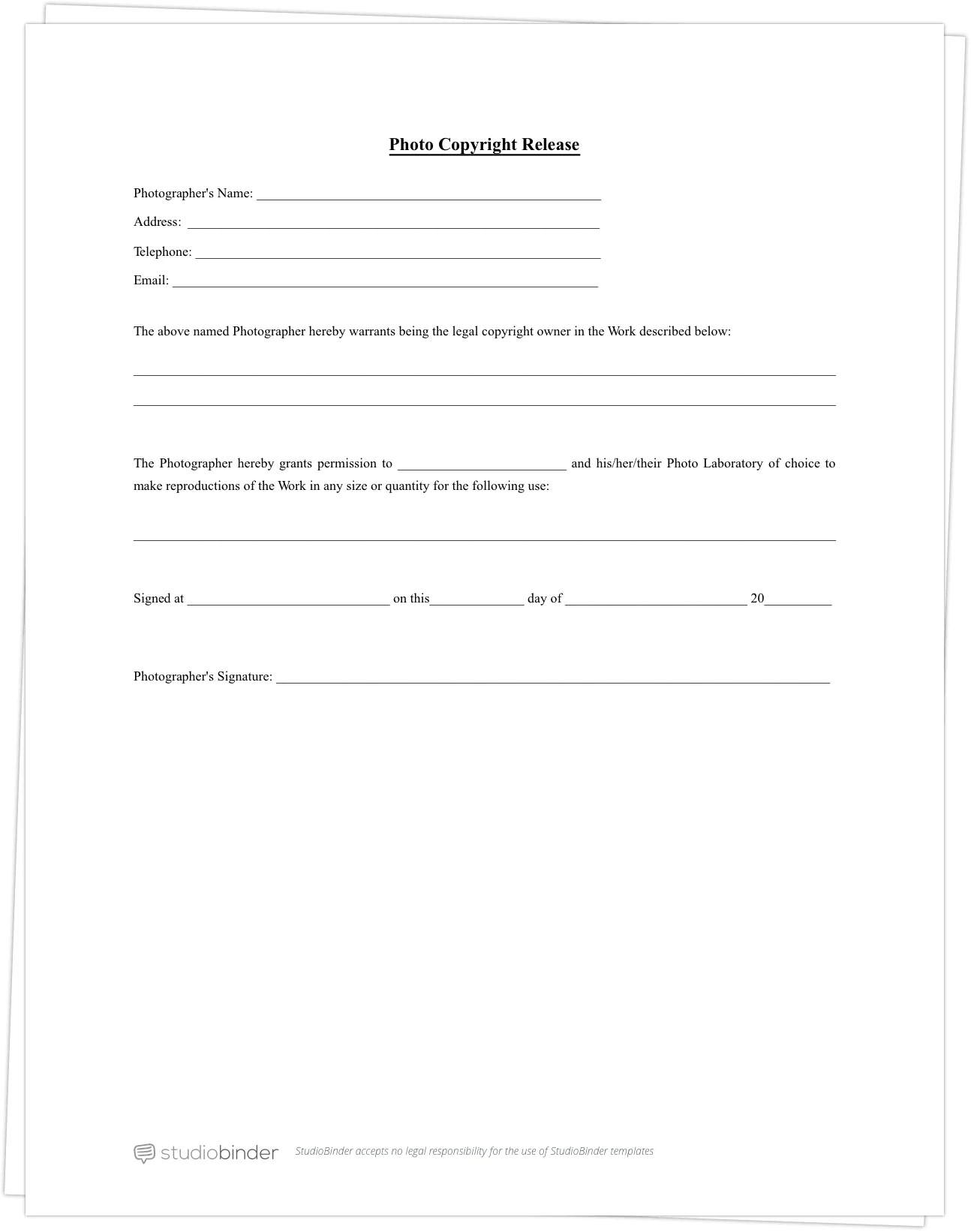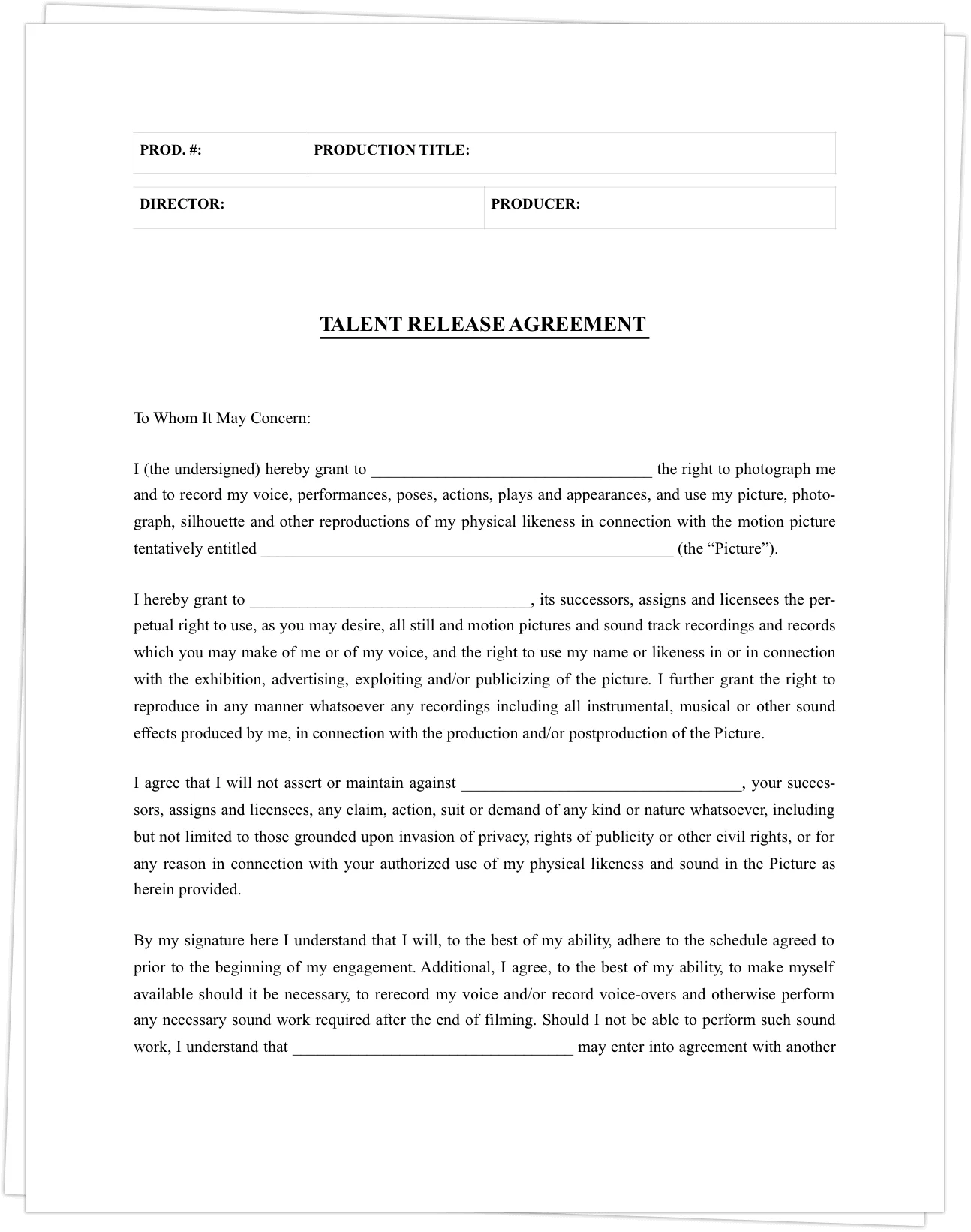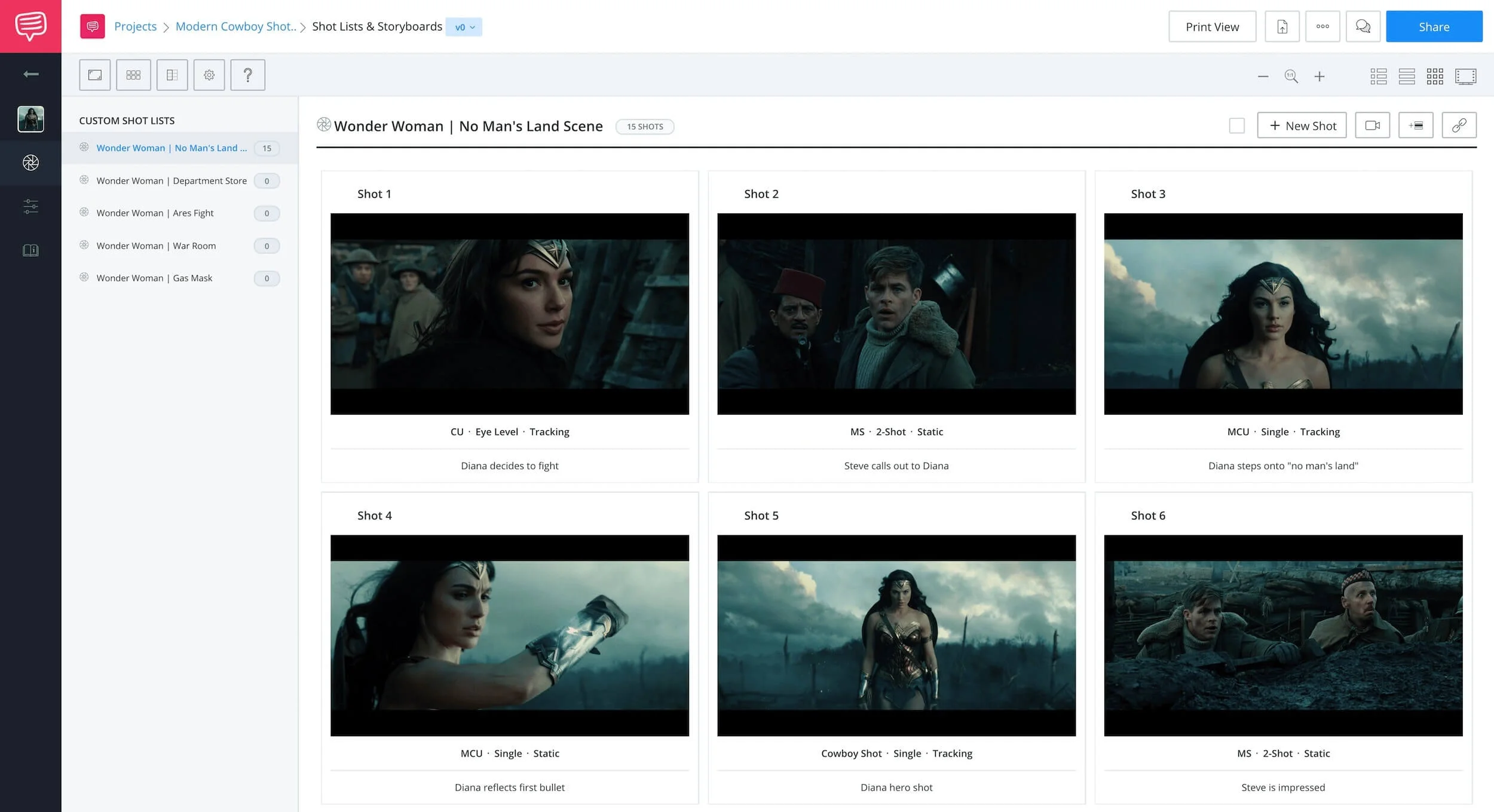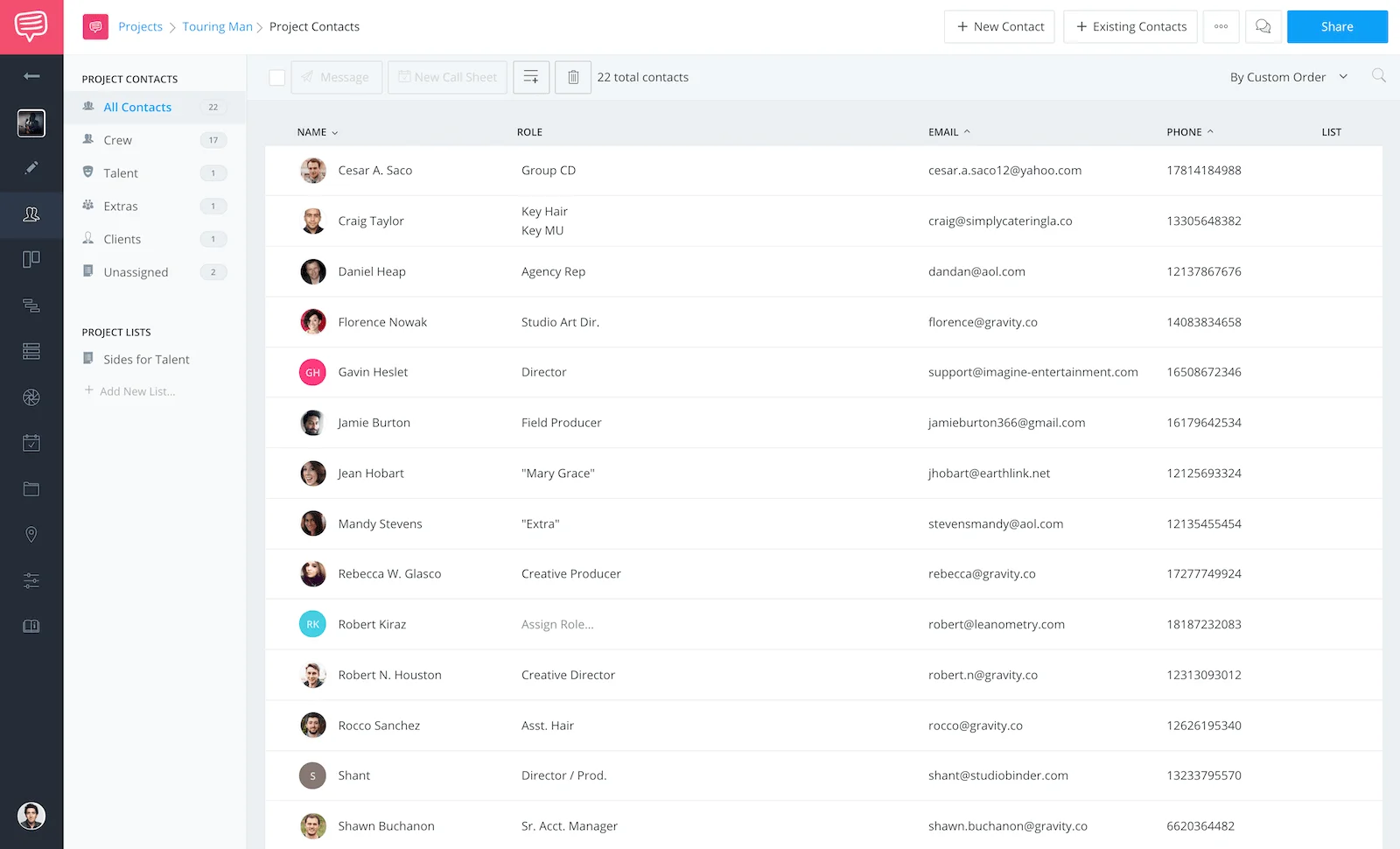A model release form is important to protect photographers from liability and licensing claims that may arise down the road. In this post, you’ll learn how to maximize its protections and download a free model release form template to help you get you started.
Let’s jump in!
Model release form definition
What is a model release form?
It's important to always obtain a signed model release form prior to shooting, regardless of whether the model is paid or unpaid.
Even if you don’t have any plans to license the photos, an opportunity may present itself well after the shoot.
To prevent any future issues, get the model release form signed prior to shooting.
Model Release FormDEFINITION
What is a model release form?
A model release form is a contract that outlines the agreement between a model and the photographer, most often used in fashion photography or corporate photography. A model release allows the photographer to use the photos promotionally or sell the photos commercially.
Know the difference
Model release vs photo release
The short answer is no, they are very different. As we mentioned, a model release is signed by the talent so the photographer can license or use the image. On the other hand, a photo release form is a document signed by the photographer and given to the client so they can print copies of the work (i.e. portraits, headshots, or wedding photos, etc.).
In most photoshoots, both agreements should be signed.
For example, let’s say you shoot headshots for an actor. They sign a model release, and you provide them with a photo release for duplication purposes.
Fast forward a couple years and they want to sell the photos on their website. But in order to do so, they would need to provide you with a licensing fee, otherwise, they would be violating your copyright.
Street photo requirements
Does street photography need a form?
In the United States, taking photos of an individual in public is a protected right for the photographer since privacy cannot be guaranteed to anyone in a public place. The exception is that the photographer cannot sell a picture commercially without a model release. So, if you took an amazing street photo of an unassuming subject, get a release signed afterward.
Lifehacker has a great article on shooting in public called ‘Know Your Rights: Photography in Public.’
When photographing groups of people in public, a photography model release form should be signed by any individuals in the photo that stands out as “identifiable” due to their unique look, dress, tattoos or other distinguishing characteristics. If the photo is used for anything that can be considered defamatory, offensive, scandalous, harmful or portrayed in a false manner, then any identifiable person in the photo who did not sign a model release may have the right to file a suit against you.
Lastly, be aware that voyeuristic shots of a private event that is happening in public view (i.e. wedding, birthday party, quinceañera, etc.) may be seen as illegal since the subjects have an implied right to privacy.
Free photography and video release forms
Select the release form you need and we'll send it to your inbox
Photography model release form structure
Our model release form template
1. Digital manipulation clause
Digital manipulation is any change made to a photo in post like retouching, for example. Especially when the ‘photoshopping’ alters the model’s physical traits.
I would venture to say that no photo commercially distributed today is without digital manipulation. For this reason, this clause should be included in all of your photography copyright model release forms to both protect yourself and those that license your photos.
2. Sensitive use
Sometimes you’re hired to shoot a sensitive topic such as suicide, racism, sex, politics or religion, etc. Including a sensitive use clause will protect you from any claims raised by the model for loss of work down the road. Sensitive use cases are naturally subjective.
They’re hard to define and differ from place-to-place. Think globally, and you’ll see the possible variance. However, it’s never a good idea to blanket authorize sensitive uses. Always use your best judgement.
Here is an example of complete language from the folks at the ASMP (American Society of Media Photographers).
"I understand that the pictures of me will be used in public-service advertisements to promote aids awareness. Knowing that such advertisements may intentionally or unintentionally give rise to the impression that I suffer from this disease, I nevertheless consent to this use."
3. Special considerations
Are you planning a photoshoot with live animals? Are you shooting underwater? Is this shoot...a sexy one?
You'll want to include any special considerations on the photography model release form before the shoot. Being as open with your model before anyone arrives to set keeps everyone on the same page and avoids uncomfortable situations.
If your shooting setups are complex, StudioBinder's Shot List Builder is useful when identifying camera specifications.
You can also easily print out the shot lists and bring them to set, or save them as a PDF to share with your talent and crew.
Related Posts
Managing model release
Administering releases
1. Prep your paperwork
If you’re a fashion photographer, have your models sign before they even go into make-up. If a model refuses to sign after a day of shooting, the work is lost. Also remember to bring extra copies when going out into the field. People make mistakes and often need to start over.
2. Get a new MODEL release form everytime you shoot
Remember to get a new release every time you shoot with the same model. It’s common to reshoot with the same models, but every project is a unique endeavor and requires new paperwork.
3. Make sure all the information is ACCURATE AND legible
The legal wording of the release is important, but so is the information that is captured. Always make sure that all the models’ details are easy to read, especially when it’s handwritten.
Because phone numbers change more often than emails, we added an email section to our free photography copyright model release form template.
If you use StudioBinder's Call Sheet Builder to send your call sheets, then you can easily cross-check the emails provided on the photo model release form with the one that's on your Project Contacts page.
Here's what my contact list looks like to give you an idea:
4. Associate proofs with executed model release forms
You’ll need to know which releases cover which photos specifically, sometimes months, years or decades after a shoot. The best practice is to bundle thumbnails or proofs from the shoot with the release in your files.
That way when someone wants to license a photo from you — you’ll know exactly which release to send. For greatest ease, create a single PDF file that has both the fully executed model release scan and the proofs from the shoot.
5. Create electronic backups
Use a scanner or smartphone to take an electronic snapshot of your fully executed model release form. Make sure to back it up somewhere safe, preferably secure cloud storage like Dropbox or StudioBinder. Many photographers have a tendency to scan a release and discard the tangible paperwork.
However, it’s best practice to retain all copies of every executed release indefinitely.
In StudioBinder, your forms are safely stored in the File Manager where you can easily download them at any point.
6. Utilize email to establish a record
Always countersign, scan and email a copy to the client after every photo shoot to generate a legal record through email trail.
Having an email, or general a backup in the cloud, provides redundancy should your computer or hard drive fail.
storing model release forms
Where do I store the forms?
While it doesn't take a high-powered computer to create a photo release form template, photography management software makes staying on top of shoots easy. No matter what software you're using, always work under one project heading. By organizing your project top down, you store your photo release forms and model release forms in one easy to find place.
Download Release Form Templates
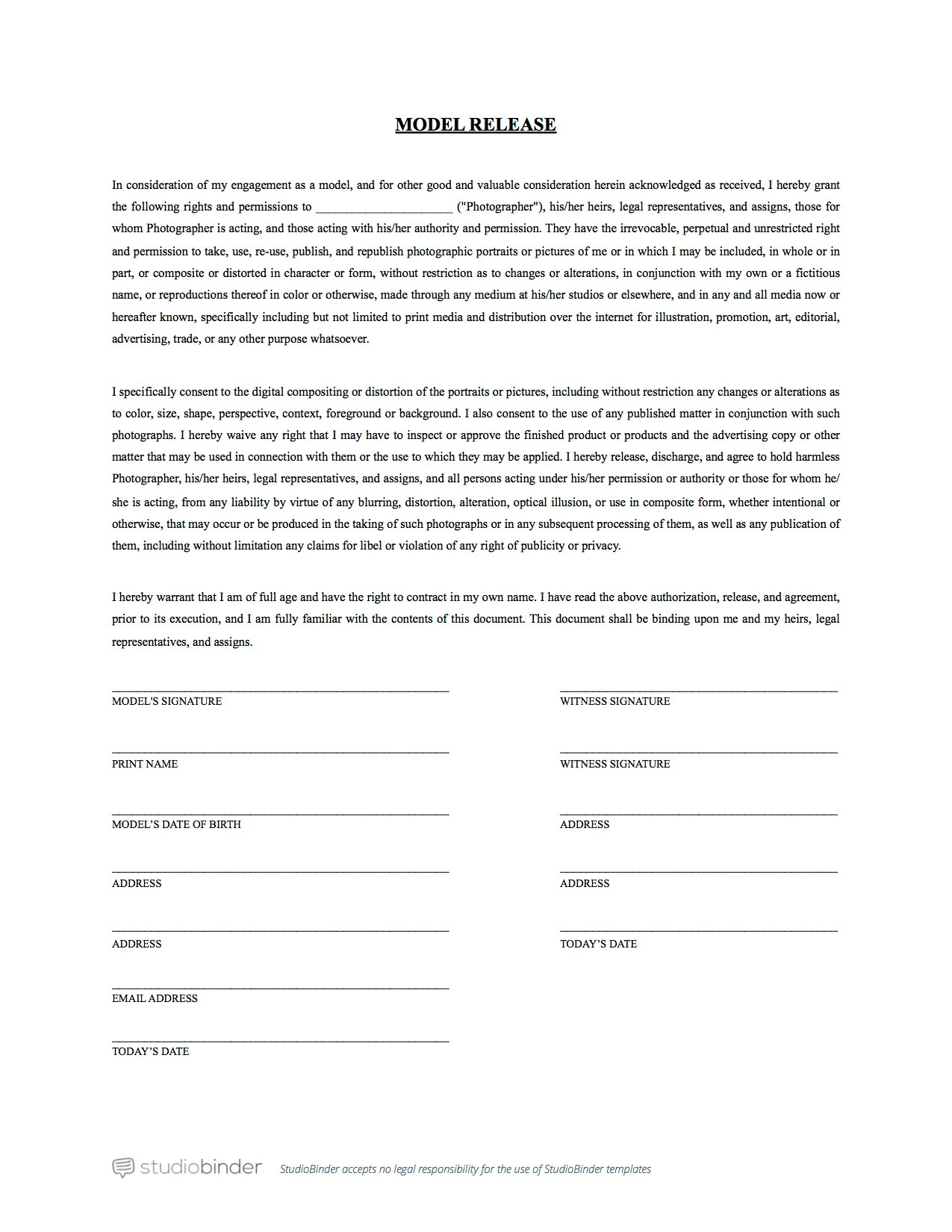
Standard model release
For the reasons discussed earlier, we’ve included a digital manipulation clause in our model photo release form template.

Simplified Model Release
This simple model release form is a shorter version of the above. This is a great option when requesting signatures from people in public as the language is not intimidating.

Minors release form
If you are shooting a minor (subjects under age 18), you must have atleast one legal guardian available for approval. In the U.S., meals, breaks and hours are tightly regulated. If you are unsure, contact your permitting office for more information.
Up next
Why A Photo Release Form Template
We hope this article is helpful in providing a better understanding of a model release form template. Remember, a model release is only part of the process.
It’s also best practice to provide a photo release form to a client that grants them permission to print the work. If you haven’t already, make sure to read our companion article where we describe why you should have a photo release form and provide a free template to get you started.
Up Next: Why a Photo Release Form →
Project management for video creatives. Tasks, file sharing, calendars and more.
Manage video production timelines, tasks, storyboards, shot lists, breakdowns, call sheets. Made for video creatives, new media and film.
